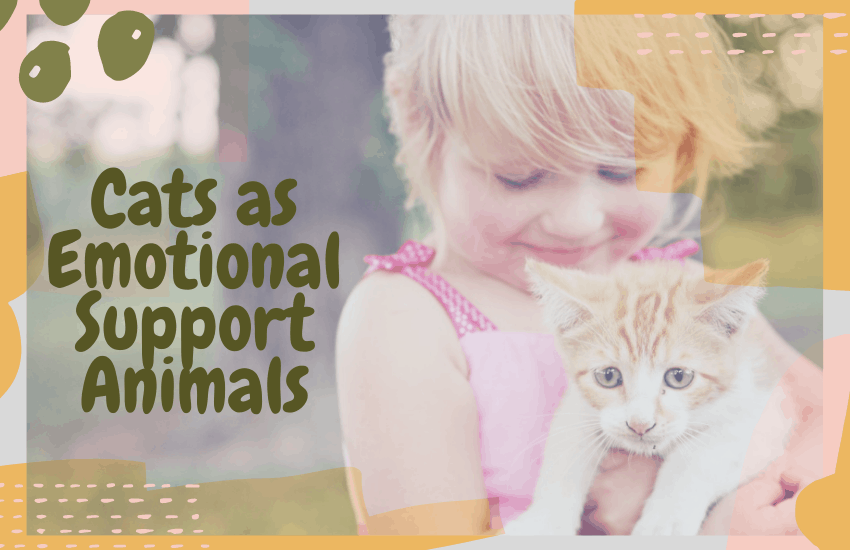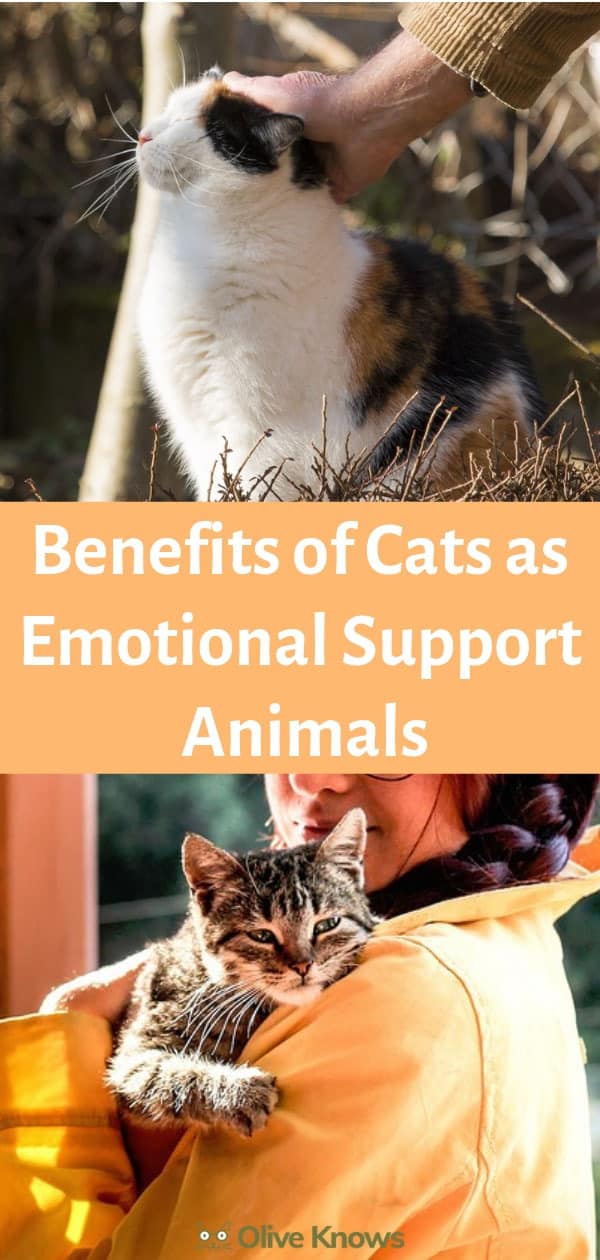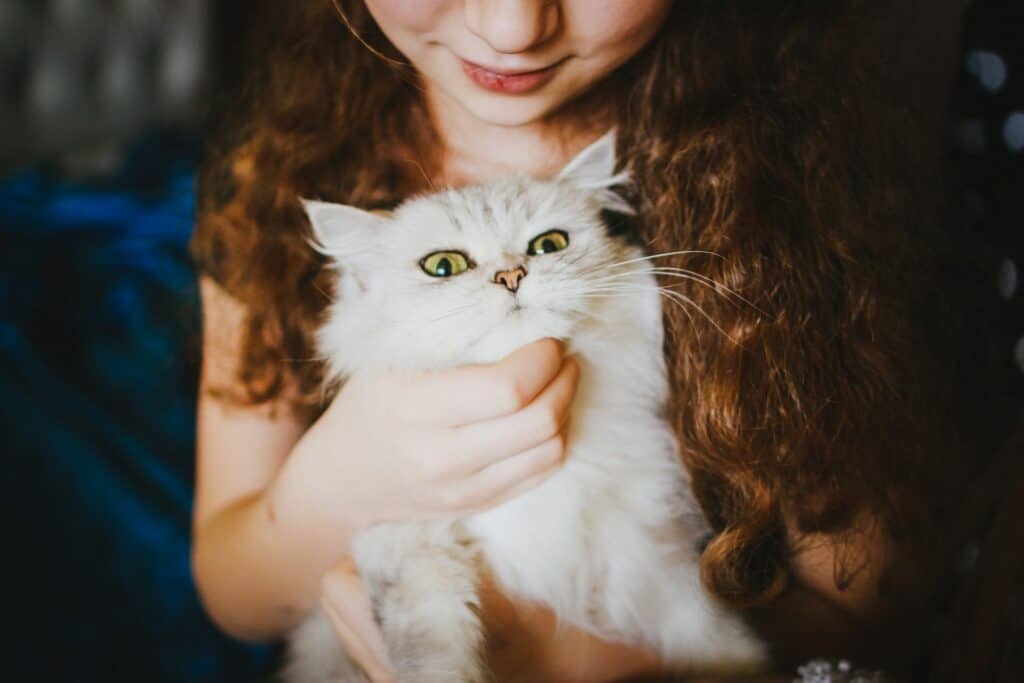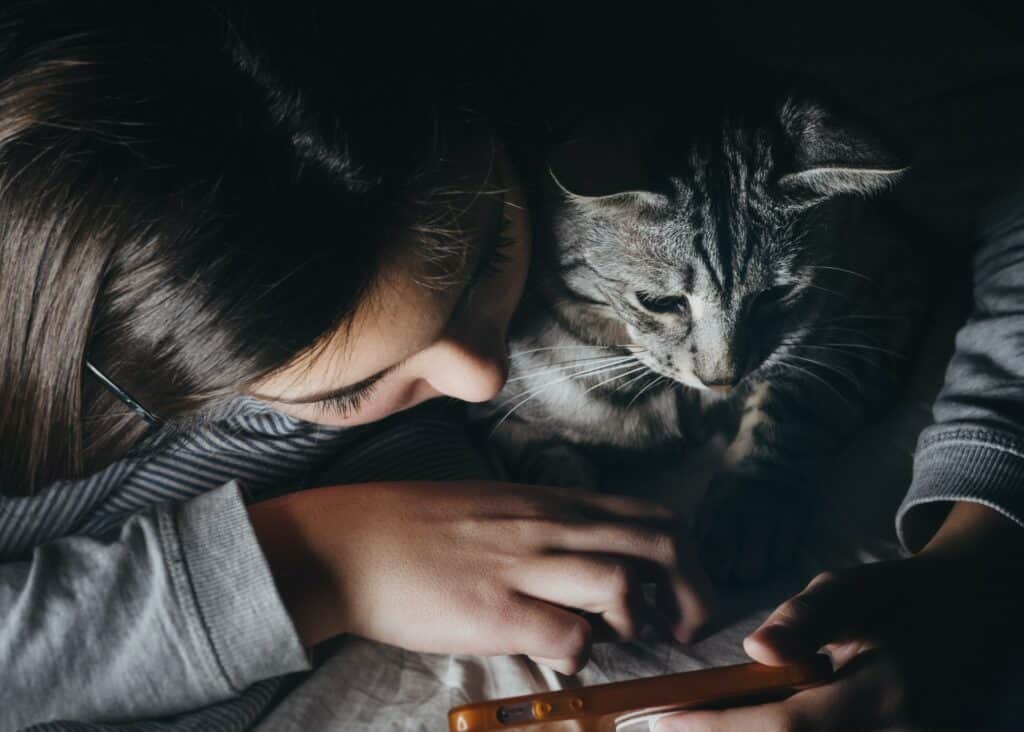
Highs and lows are a part of life, as we all know. One day you may be on top of the world, having conquered a fear, anxiety or anything you felt was holding you back. Then there are the days when you feel bummed out for no reason, can’t force yourself to get out of bed, or something happens to make you feel broken and alone. On those days, you need someone by your side to help you get through it.

That’s why it can be beneficial to have an emotional support animal, or ESA, to keep you company during the tough times. So, what is an emotional support animal and will a cat make a good emotional support animal?
Table of Contents
Service Animals vs. Emotional Support Animals
Most of us have encountered a service animal at some time in our lives, whether it be learning about them in school as a child, or encountering one while we’re out running errands. If you’re not familiar with what a service animal does, they are used to support individuals with a disability. There are many different types of service animals such as a seeing animal, hearing animal and mobility animal, though service animals can be used to assist with just about any disability.
While most of us think of seeing-eye dogs when we hear the term “service animal,” service animals aren’t limited to just dogs. They can also be miniature horses, monkeys, and ferrets just to name a few. As service animals, their duty is to assist their humans with day to day tasks and they spend most of their time “on the job.” It can be tempting to want to pet or play with a service animal when you see them out and about, but it’s important to not interrupt or distract them while they’re on duty.
On the other hand, emotional support animals are meant to assist individuals with a mental or emotional condition. Individuals suffering from severe depression, anxiety, mood disorders, Post-Traumatic Stress Disorder, or panic attacks to may be prescribed an emotional support animal by their health care provider. Unlike service animals, emotional support animals have little to no training and their primary purpose is to provide comfort and companionship to their human.
Another important distinction to keep in mind is unlike service animals, emotional support animals are not allowed the same freedoms in public establishments as service animals are. For example, you will probably see seeing-eye dogs in a public place such as the grocery store or a restaurant, but emotional support animals are meant for in-home companionship rather than in public. That being said, emotional support animals are allowed in the cabin of an airplane as long as you have the proper documentation and the animal isn’t a danger or nuisance to other passengers. If you do take your emotional support animal on the plane, consider getting a bandana or id tag to let others know your animal is an emotional support animal.

How to Qualify for an Emotional Support Animal
Unfortunately, pet parents can’t just declare their pet as an emotional support animal. In order to qualify as an ESA, you will need to have the proper paperwork. As mentioned above, an emotional support animal is prescribed by a licensed mental health professional. If your health care provider believes an emotional support animal will benefit your condition, they will be willing to fill out the necessary paperwork.
An emotional support animal can really be any type of animal you prefer, but there are some restrictions such as city ordinances or restrictions put into place by your property manager that may limit the animal you can have. The most common types of emotional support animals are cats, dogs, birds, ferrets, and rabbits. The best thing to do is double check that the animal of your choice is not restricted by where you live.
The Cost of an Emotional Support Animal
As mentioned above, an emotional support animal is prescribed by a doctor so the cost of obtaining the documentation will be part of your medical expenses. It might be tempting to obtain a certification letter from one of the many sites online that just require you to pay a fee. However, be aware that letters obtained from sites such as these can be denied by airlines and property management companies as it is unlikely these “doctors” have actually examined or treated you.
These types of sites are also detrimental to the importance of emotional support animals. In the past, obtaining a letter from one of these sites is used to bypass the system when it comes to avoiding fees for airline travel with a pet or a property manager that doesn’t allow pets. Though there are likely some individuals who really do qualify for an emotional support animal, many of these people don’t. As such, healthcare providers and establishments have become more strict with their policies regarding emotional support animals.
The Benefits of an Emotional Support Animal
Have you ever had trouble finding an apartment that allows pets? Landlords have definitely gotten more lenient about pet-friendly buildings, but it can be a hassle to find a place that fits your budget and accepts your pet. People who have been granted a prescription for an emotional support animal have the benefit of being allowed an emotional support pet even if the complex is pet free. This makes it much less stressful for people with mental or emotional conditions to find housing, and property managers must waive any pet deposits and fees as long as the individual has the proper certification.
Emotional support animals are great because they can comfort their humans, provide companionship to make their humans feel less alone, increase social interactions and in some cases (depending on the animal) they can even encourage physical activity. All of these things are a benefit to someone that experiences an emotional or mental condition.
Do Cats Make Good Emotional Support Animals?
Experts agree that cats can make exceptional emotional support animals. Some of the best cat breeds for emotional support animals are the Siamese, Maine Coons, Ragdolls, and Persians thanks to their loyal, playful, and loving personalities. However, any cat breed can make a good emotional support animal for someone in need.
Sure, cats get a bad rap as being aloof or plotting the demise of their humans but cat lovers know an entirely different side of cats. They can be loving, intuitive and exactly what you need to get you through a hard time. Cats can be active and will encourage their humans to get up a move whether it be using a harness and leash to take her for a walk, or having her chase a cat toy around the house. Cat parents can also count on their cat to be a great source of entertainment and laughter due to their spontaneity. With a curious nature, you never know what your cat is going to do next!

I can personally attest to the benefits of having a cat as a means of emotional support. In 2014, my older brother passed away suddenly. In the days following his death, my family and I leaned on one another for support, but eventually, I had to face the real world again. Since I had been staying at my parents’ house for weeks, this meant going home to my own apartment.
Luckily for me, I wasn’t going home to a completely empty apartment. Instead, I was comforted by the fact the little calico cat I had adopted just a month before was going to be there to keep me company. While she isn’t an emotional support animal in the official capacity, Lou helped me get through many days filled with grief and has been a constant source of comfort since.
With the calm nature of cats, they continue to be one of the most commonly chosen animals when it comes to emotional support animals. This is due in large part to their sensitivity to human emotion and social cues. There have also been studies that have shown petting a cat can result in a reduction of stress, lowering of heart rate and blood pressure, and lower cortisol levels. It’s no wonder cats are often chosen as companion animals!
If you feel like you can benefit from an emotional support animal, it is best to consult your doctor to determine if you meet the qualifications. When it comes time to choose an emotional support animal, its all about preference. That being said, we’re pretty biased and are partial to the soothing purr of felines!
Continue reading:


Leave a Reply